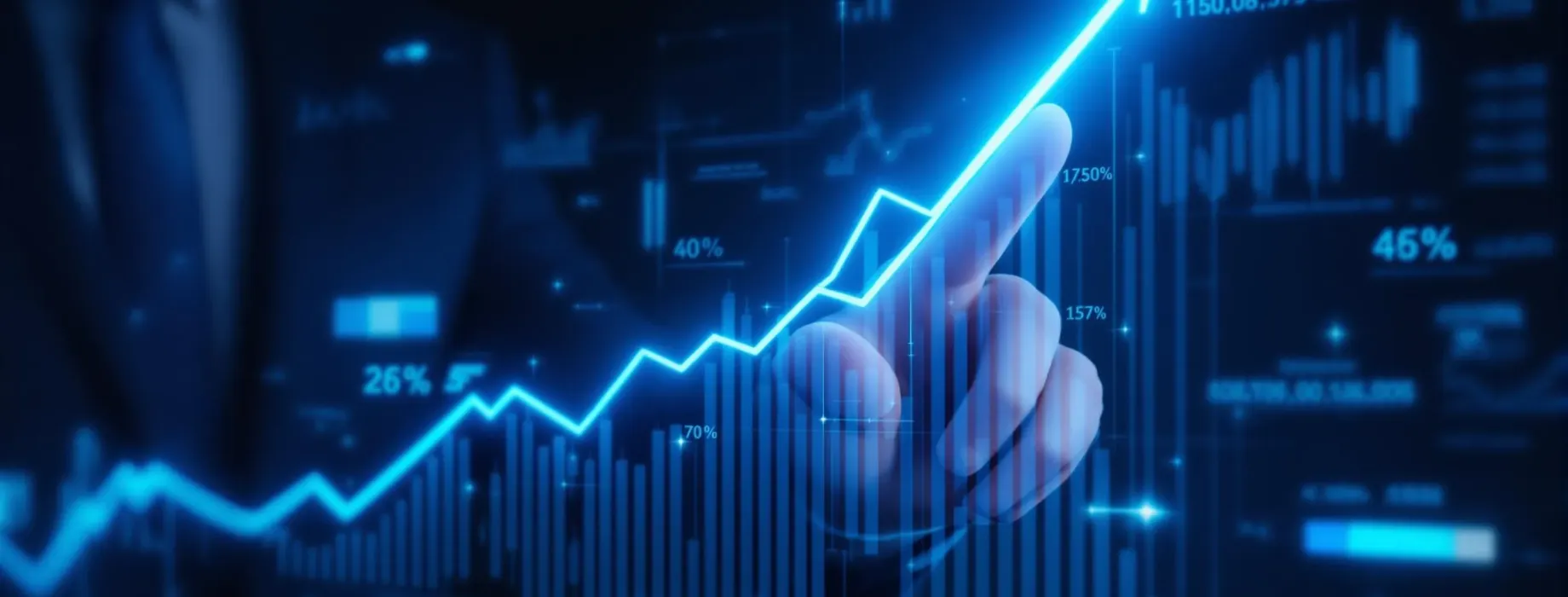- Jigsaw Trading — Professional Order Flow Tools
- Bookmap — Market Depth Visualization Platform
- CME Group: Market Microstructure Resources
- TradingView Order Flow Widgets (for basic retail analysis)
Mental Models for Trading: Cognitive Frameworks for Decision Making

Most traders lose not because of poor strategy — but because of poor thinking.They jump into trades on instinct, exit in panic, and confuse randomness for signal. In reality, sustainable success in markets depends less on what you trade, and more on how you think.That's where trading mental models come in.
Article navigation
- 🧠 What Are Mental Models in Trading?
- 🔄 First Principles Thinking in Markets
- 🎯 Probabilistic Thinking & Bayes’ Framework
- 📉 Inversion & Risk-Avoidance Logic in Trading
- 🧱 Circle of Competence & Trading Edge
- 🪞 Mental Biases & Cognitive Traps in Trading
- 📊 Building a Decision Matrix for Trades
- 🧾 Conclusion: Mental Clarity = Market Edge
- 📚 Sources & Tools
Mental models are cognitive shortcuts — structured ways to make sense of complexity, reduce emotional interference, and improve decision quality under uncertainty.
Used by elite investors like Charlie Munger, mental models help traders:
• Frame problems correctly
• Manage risk with logic, not emotion
• Operate with consistent, probabilistic discipline
In this guide, we’ll walk through the most powerful cognitive frameworks for trading — from first principles to decision matrices — and show how to apply them in real-world market conditions.
🧠 What Are Mental Models in Trading?
Mental models are not theories or tools — they’re ways of seeing.
In trading, a mental model is a structured thinking pattern that simplifies complexity, exposes hidden variables, and helps you make decisions under pressure.
Instead of reacting emotionally or improvising, traders who use cognitive frameworks can:
• See second-order consequences before they unfold
• Evaluate risk more clearly
• Avoid impulsive errors and recency bias
🧩 How Mental Models Work in Trading:
Think of mental models as filters.
Each model helps answer a different question:
• “What’s really driving this price move?” → First Principles
• “Am I overreacting to noise?” → Bayesian Thinking
• “What happens if I’m wrong?” → Inversion
• “Is this my domain of expertise?” → Circle of Competence
The more models you master, the better you navigate market uncertainty — because you’re not relying on one rigid method, but on flexible decision-making systems.
🔄 First Principles Thinking in Markets
Most traders rely on analogy:
“This pattern worked before, so it should work again.”
“This setup looks like the one I saw yesterday.”
But first principles thinking starts differently.
Instead of copying — it deconstructs.
🧠 What Is First Principles Thinking?
It’s a method of breaking down a situation to its most fundamental truths, then building up from there.
In trading, this means asking:
• What is the core driver behind this price movement?
• Is it liquidity, news, positioning, macro pressure — or just noise?
• If I strip away all surface patterns, what remains real and causal?
🛠️ How It Helps Traders:
Instead of reacting to indicators or setups that look familiar, you:
• Analyze the underlying mechanics of a move
• Question assumptions built into market consensus
• Avoid herd behavior and pattern overfitting
For example:
If a breakout happens on low volume, poor sentiment, and no fundamental catalyst — a first-principles thinker might fade it, while a surface-level trader buys late and gets trapped.
This model frees you from imitation.
It forces you to think like a builder, not a follower.
🎯 Probabilistic Thinking & Bayes’ Framework
In markets, nothing is guaranteed — only probable.
Probabilistic thinking means evaluating outcomes not as binary (win/lose), but as weighted scenarios with varying levels of confidence. It’s the mental model behind every disciplined decision maker in trading.
📊 The Bayesian Way of Thinking
Bayesian logic helps traders update their beliefs as new data arrives.
You start with a hypothesis (e.g., “price may reverse at this level”), then adjust your conviction based on:
• Price reaction
• Volume confirmation
• News or macro context
• Order flow behavior
This approach prevents anchoring bias — the tendency to stick to an old idea even after conditions have changed.
🎯 Example: Using Probabilities in Real Time
• Setup: You’re watching for a pullback to VWAP.
• Initial belief: 60% chance of bounce.
• But volume thins out, and sellers start hitting bids.
• You reduce the probability to 30%, adjust size, or cancel the trade.
This is trading psychology frameworks in action — systematic, flexible, data-driven thinking under uncertainty.
When you think in probabilities, you stop being “right” or “wrong” — you simply manage edge and exposure.
📉 Inversion & Risk-Avoidance Logic in Trading
Most traders ask:
“What can I do to make this trade work?”
But smarter traders invert the question:
“What would cause this trade to fail — and how do I avoid that?”
This is the essence of inversion: thinking in reverse to stress-test your assumptions and focus on survival first.
🧠 What Is Inversion in a Trading Context?
Inversion is the mental model of starting with the worst-case scenario and working backwards.
Before entering a trade, ask:
• What would a failed trade look like?
• What would make this setup a false signal?
• How can I limit damage if I’m wrong?
This forces you to build decisions around risk first, not outcome.
🚫 Case in Point:
You see a breakout, but it’s late in the session.
You invert the logic:
• What if this is just stop hunting?
• What if volume dries up on the retest?
By thinking this way, you set:
• Tighter stop
• Lower size
• OR skip the trade entirely
“Avoid stupidity before chasing brilliance.”
— In trading, not losing is often a bigger edge than winning.
Inversion protects you from emotional overconfidence, traps, and forcing trades that don’t meet full criteria.
🧱 Circle of Competence & Trading Edge
Markets offer endless setups, assets, and strategies.
But not all of them are meant for you.
The circle of competence is a mental model that helps traders define — and respect — the boundaries of what they truly understand.
🔍 What Is a Circle of Competence?
Coined by Warren Buffett, it refers to the domain where your knowledge is deep, tested, and reality-aligned.
In trading, that might be:
• A specific market (e.g., U.S. equities)
• A structure (e.g., breakout failures)
• A timeframe (e.g., NY open)
• A strategy you’ve personally stress-tested
Everything outside that circle is where:
• You overestimate your edge
• You misread context
• You take impulsive or misinformed risk
🧠 How This Protects Your Trading Edge
Staying within your circle:
• Keeps your edge repeatable
• Prevents overtrading random setups
• Reduces drawdowns from “curiosity trades”
And here’s the key:
Your circle isn’t fixed. You can expand it — but only through deliberate study and tracked performance, not random exposure.
“It’s not supposed to be exciting. It’s supposed to be consistent.”
— True edge comes from depth, not breadth.
🪞 Mental Biases & Cognitive Traps in Trading
No matter how strong your system is, your brain will try to sabotage it.
Cognitive biases are hardwired shortcuts — useful in survival, but dangerous in markets. They distort data, fuel impulsivity, and lead to poor trades dressed up as “intuition.”
Let’s break down the ones that hit traders hardest.
🧠 1. Confirmation Bias
You want the trade to work — so you seek info that supports it and ignore the red flags.
Solution:
Force yourself to list 3 reasons not to take the trade. If they’re valid, walk away.
🧠 2. Recency Bias
The last few wins make you overconfident. Or the last few losses make you doubt your edge.
Solution:
Track setups over 50+ trades, not 5. Emotional memory is not statistical truth.
🧠 3. Overconfidence Bias
You’ve studied hard, had a good week — and now you’re invincible.
Solution:
Set fixed daily loss limits, no exceptions. Ego fades fast when capped by rules.
🧠 4. Loss Aversion & Sunk Cost Fallacy
You’re in red — and instead of cutting the loss, you justify holding because “I’ve come this far.”
Solution:
Pre-define your exit based on structure, not emotion. Then automate or alert it.
🎯 Bonus: The Illusion of Control
Thinking that more charts, more screens, more data = more edge.
Often, it’s the opposite.
“You don’t need to know everything — you just need to execute the few things you do know, flawlessly.”
📊 Building a Decision Matrix for Trades
Decision-making in trading should be systematic, not emotional.
A decision matrix helps turn scattered thoughts into structured logic — by scoring trades across key variables.
This model combines your trading mental models into a repeatable framework.
🧩 Step 1: Define Evaluation Criteria
Before placing a trade, assess it across dimensions like:
• Setup Quality: Is the pattern clean, tested, in context?
• Market Context: Macro alignment, session timing, volatility
• Risk/Reward Ratio: At least 2:1 based on structure?
• Emotional State: Are you tired, rushed, tilted?
• Position Size Fit: Within your risk plan?
📝 Step 2: Assign Scores
Use a 1–5 scale for each criterion.
For example:
| Criteria | Score (1–5) |
|---|---|
| Setup Quality | 4 |
| Context Alignment | 5 |
| RR Ratio | 3 |
| Emotional Neutrality | 2 |
| Sizing Discipline | 5 |
| Total | 19 / 25 |
You can predefine:
• 21+ → High-quality trade
• 16–20 → Cautious entry
• <15 → Pass or wait
⚙️ Why It Works
This matrix removes ambiguity from your process.
Instead of relying on “feel,” you score the facts.
It reinforces discipline, objectivity, and self-awareness — the core pillars of trading psychology frameworks.
🧾 Conclusion: Mental Clarity = Market Edge
Markets are messy. Information is noisy. Your emotions lie to you.
Mental models are how you stay grounded.
They help you frame uncertainty, act rationally, and operate with internal consistency — even when the market is irrational.
Master the process of thinking, and your trading edge will take care of itself.
Think in systems. Score your decisions.
Stay humble — but never undisciplined.
📚 Sources & Tools
FAQ
Can I trade successfully without mental models?
You might — but success will be inconsistent. Mental models provide clarity and repeatability, especially in volatile or ambiguous situations.
How many models do I need?
Start with 3–4: first principles, probabilistic thinking, inversion, and circle of competence. The goal isn't quantity, but depth and application.
Are mental models better than indicators?
They serve different purposes. Indicators measure the market; mental models measure your decision process. One without the other leads to imbalance.
Can I automate these frameworks?
Some parts — like scoring matrices — can be automated. But models like risk inversion or bias recognition require active self-awareness and journal reviews.
